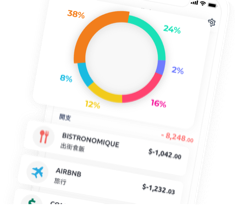Pets are important members of the family. In recent years, many insurance companies have introduced pet insurance with comprehensive coverage, benefiting both pet health and owner finances.
When choosing the right pet insurance, knowing what to look for and which plan best suits you and your pet can be overwhelming. This article will explain the basic concepts of pet insurance and guide what to consider when insuring your pet.
How Does a Pet Insurance Work?
As we all know, veterinary care and pet surgeries can be quite expensive in Hong Kong. Pet insurance protects pet owners’ interests by transferring potential financial risks to the insurance company.
Currently, the primary pets covered by insurance policies on the market are cats and dogs, with coverage including pet medical care, pet liability, search and rescue advertisements, and accidental funeral expenses.
In addition, if a pet accidentally injures someone or damages someone else’s property, pet liability insurance can help the owner pay for financial compensation, effectively reducing their financial burden.
Comparison of Pet Insurance Compensation Types
While human insurance products come in wide varieties, pet insurance is relatively simple, generally based on medical coverage with additional protections such as third-party liability, accident, and loss compensation.
| Pet Insurance Coverage Scope | Description |
| Medical coverage | Medical insurance for pets aims to cover medical expenses resulting from pet injuries or illnesses, typically reimbursing the owner for actual costs incurred, similar to human hospitalization insurance. Typical coverage for pet medical insurance includes veterinary outpatient, inpatient, and surgical fees, including blood tests, X-rays, and other examinations. Some insurance policies cover long-term illnesses such as diabetes, chronic kidney disease, and joint issues and even include alternative therapies such as homeopathy, acupuncture, and physiotherapy, when a veterinarian recommends. |
| Loss compensation | Current pet loss compensation does not reimburse the pet’s value when lost, but rather, when the pet is found missing, the owner can claim advertising or printing expenses for search ads from the insurance company to help locate their pet. However, compensation usually does not cover rewards offered in search ads. |
| Third-party liability | In pet insurance, third-party liability coverage refers to situations where a pet’s behavior causes injury, death, or property damage to a third party. The insurance company compensates according to policy terms, similar to third-party auto insurance. However, policyholders should be aware that some liability insurance does not cover the total amount, and the owner may need to bear a percentage of the compensation. Additionally, there is a limit to third-party liability compensation. |
Considerations and Comparisons When Buying a Pet Insurance
Compare pet insurance coverage scope and amounts: Each policy has its coverage scope, and the terms and conditions stipulate the compensation for specific events or accidents during the policy’s effective period. There may be differences between policies even within the same type of coverage plan. The higher the coverage scope and amount, the more expensive the premium. Therefore, you need to consider the necessity of additional coverage and amounts.
Compare Pet Insurance Coverage and Amounts
Each policy has its coverage, and the terms and conditions stipulate the compensation for specific events or accidents during the policy’s effective period. There may be differences between policies even within the same type of coverage plan. The higher the coverage scope and amount, the more expensive the premium. Therefore, you need to consider the necessity of additional coverage and amounts.
Compare Pet Insurance Premiums
The primary purpose of purchasing pet insurance is to receive compensation in case of accidents or the diagnosis of severe illnesses, reducing financial burdens—pet insurance premiums on the market range from a few thousand to over five thousand dollars per year. Before purchasing, you must balance premium costs and the possibility of claims.
Compare Pet Insurance Exclusions
Exclusions are the uncovered items, referring to conditions for which the insurance company does not provide compensation. Insurance companies coverage plans have various items and exclusions, such as congenital diseases, pre-existing conditions, dental care, sterilization, pregnancy, and routine physical examination expenses. These items will be listed in the insurance contract. When purchasing insurance, review the policy’s exclusions to avoid unnecessary disputes and manage your financial budget effectively.
Assess Potential Medical Expenses for Your Pet
If your pet becomes ill or encounters an accident, numerous medical expenses may arise, including veterinary consultation fees, surgery, anesthesia, hospitalization, X-rays, and ultrasound examination fees. Depending on your pet’s breed, age, and medical history, the potential medical expenses for the owner may vary significantly.
It is essential to do your research beforehand, consult with experienced friends or online acquaintances who have similar pets, and evaluate the type and amount of pet insurance coverage you need to purchase.
In conclusion, when selecting pet insurance, it is crucial to consider the coverage scope, premium costs, and any exclusions in the policy. Thorough research and consultation with experienced pet owners can help you make an informed decision to ensure your pet is protected and your financial burdens are minimized in case of accidents or illnesses.






















